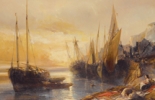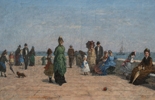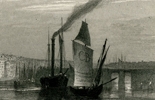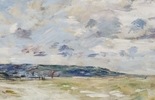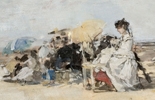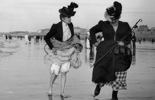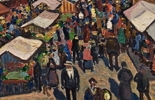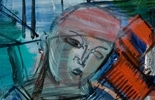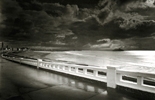L’estuaire de la Seine, l’invention d’un paysage
The exhibition "L’estuaire de la Seine, l’invention d’un paysage" grew out of the desire of several Japanese and Korean museums to recount how the image of Normandy was "built" over time and then widely disseminated through the work of the artists who starting travelling to the region in the 19th century.
The estuary, meaning the lower end of a river inundated by the tide twice a day, is a rather exotic notion for the inhabitants of Japan, a group of volcanic, mountainous islands where the rivers flow quickly into the sea. Explaining how and why the Seine estuary, from Rouen to Le Havre/Honfleur, was such a draw for artists is the main theme of the exhibition.
The Seine estuary boasts a combination of historical sites, vestiges of a past that dates to the Middle Ages, fertile countryside, thriving industrial cities, and a maritime landscape, all bathed in a light said to be like no other, the light of estuaries. But over time this landscape has undergone changes, and even upheaval during the war, like Le Havre severely damaged by bombardments.
The exhibition spans nearly a century and a half, from the 1820s to the early 1950s, and shows how the region gradually grew to fame and proved to be a leading artistic centre. Romantics, disciples of the "nouvelle peinture" (new painting), Impressionists, pioneering photographers and Fauves all came here in search of something in particular.
The travelling exhibition to Japan and Korea, from September 6, 2014 to August 10, 2015, features 86 paintings, 16 prints and 35 photographs, for a total of 137 artworks on display. To share and perpetuate the exhibition, MuMa is pleased to present an overview here.
The estuary, meaning the lower end of a river inundated by the tide twice a day, is a rather exotic notion for the inhabitants of Japan, a group of volcanic, mountainous islands where the rivers flow quickly into the sea. Explaining how and why the Seine estuary, from Rouen to Le Havre/Honfleur, was such a draw for artists is the main theme of the exhibition.
The Seine estuary boasts a combination of historical sites, vestiges of a past that dates to the Middle Ages, fertile countryside, thriving industrial cities, and a maritime landscape, all bathed in a light said to be like no other, the light of estuaries. But over time this landscape has undergone changes, and even upheaval during the war, like Le Havre severely damaged by bombardments.
The exhibition spans nearly a century and a half, from the 1820s to the early 1950s, and shows how the region gradually grew to fame and proved to be a leading artistic centre. Romantics, disciples of the "nouvelle peinture" (new painting), Impressionists, pioneering photographers and Fauves all came here in search of something in particular.
The travelling exhibition to Japan and Korea, from September 6, 2014 to August 10, 2015, features 86 paintings, 16 prints and 35 photographs, for a total of 137 artworks on display. To share and perpetuate the exhibition, MuMa is pleased to present an overview here.


